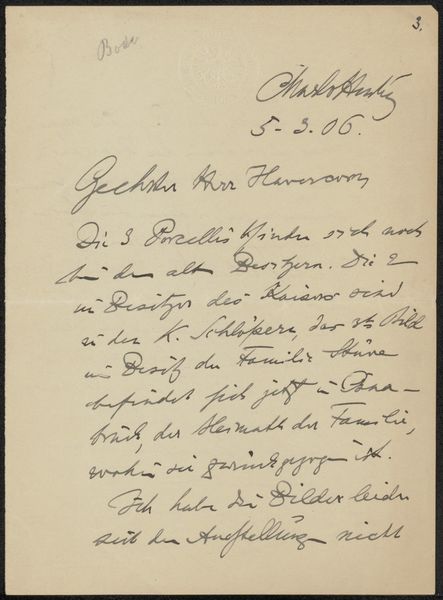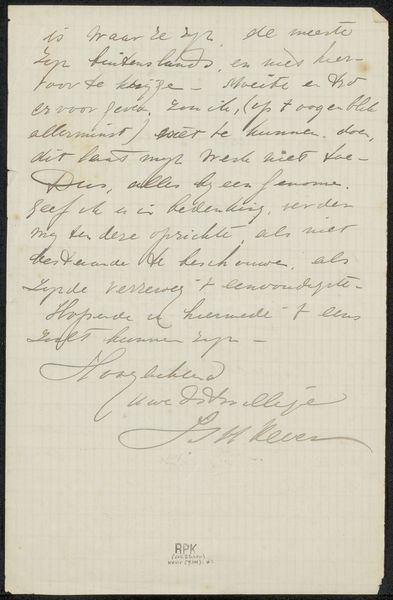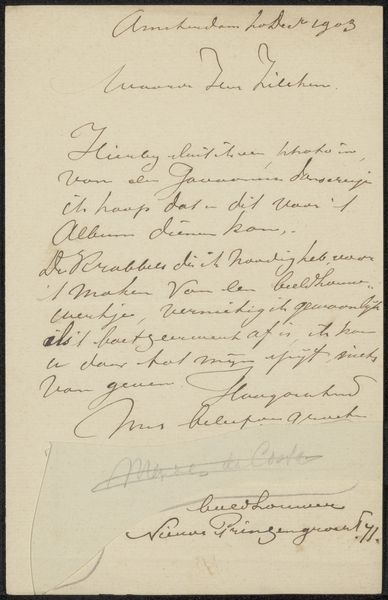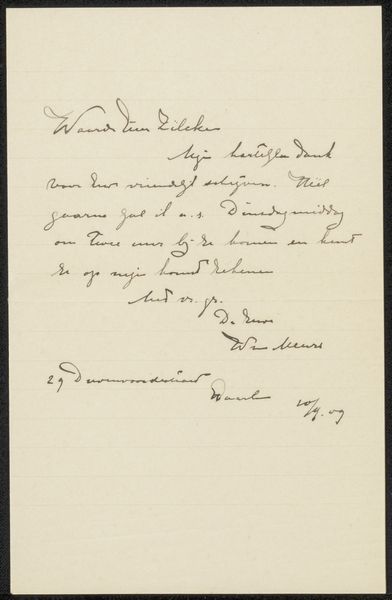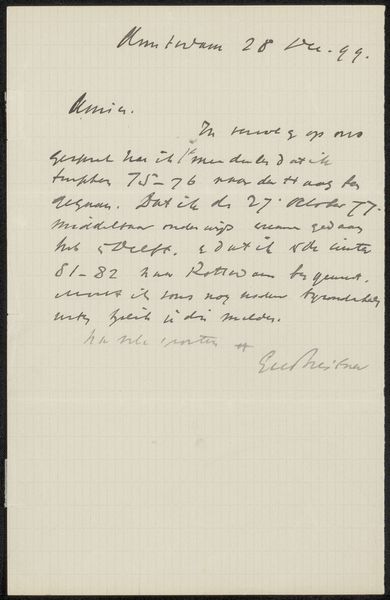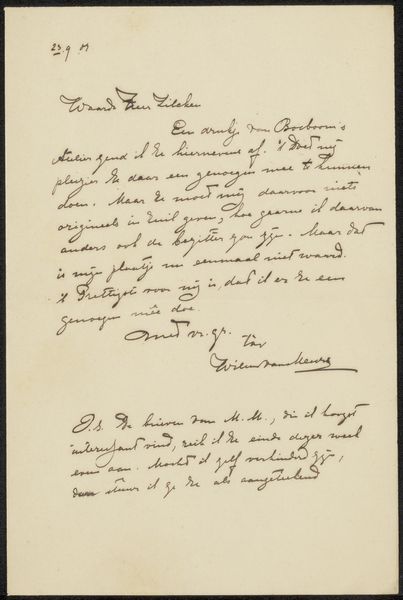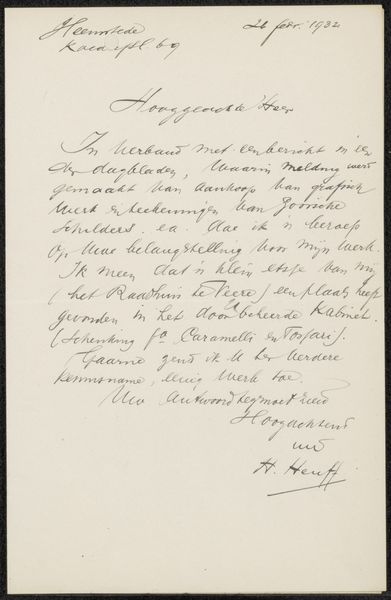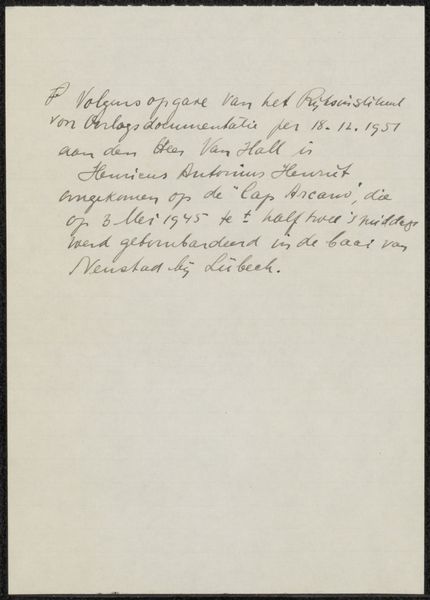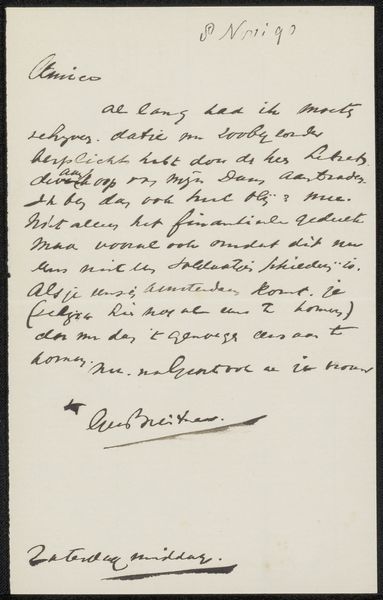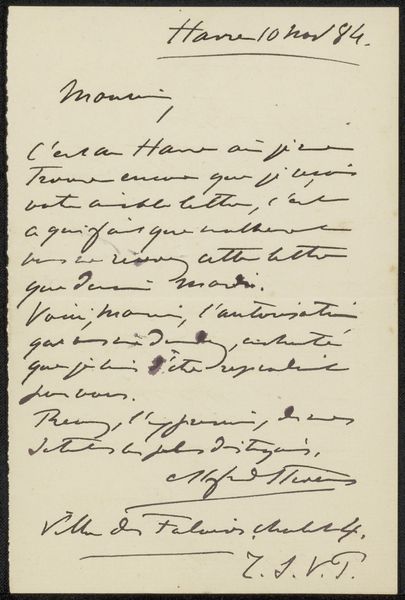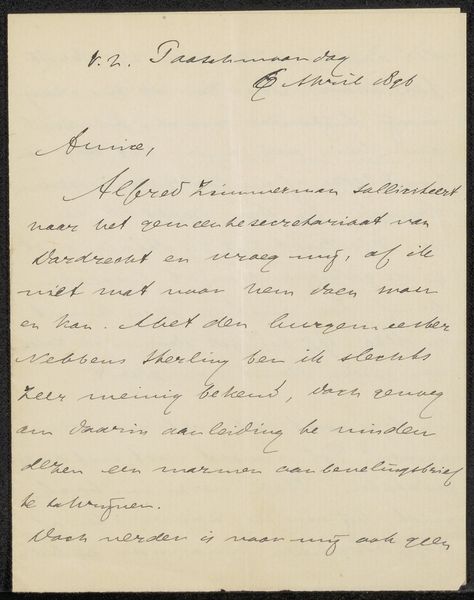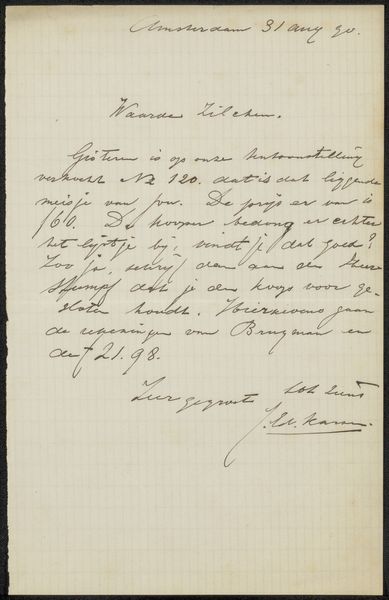
drawing, ink, pen
#
drawing
#
ink
#
intimism
#
pen
#
calligraphy
Copyright: Rijks Museum: Open Domain
Curator: This is a drawing called "Brief aan Philip Zilcken," a letter in ink on paper penned by Léonce Bénédite before 1906. The script itself has a kind of intimate gravity, don't you think? Editor: Yes, instantly! The ink bleeds a little into the page, giving it this blurry, dreamlike effect. I feel like I’m peering into a private moment. It feels… personal, almost intrusive. Curator: The calligraphy really draws you in. Observe how Bénédite varies the pressure, thick strokes juxtaposed with almost impossibly thin hairlines. This variance creates rhythm. There's a formal elegance. Editor: Agreed, it’s a dance of ink across paper. But beyond the formal beauty, there's something incredibly vulnerable about handwriting. Each slant, each loop tells a story about the person holding the pen. I wonder what the letter says? Curator: Indeed! Though undated precisely, consider that the drawing resides firmly within the "intimism" thematic. This artistic inclination focuses on the candid portrayal of domestic scenes and familiar figures, inviting a level of closeness and immediacy. It implies closeness with its recipient. Editor: Which, makes it all the more… well, human! We have the visual cues of the letter as art object, and the human elements inherent in handwriting which give the composition an in-built emotive register. It seems to blend personal reflection and artistry into one physical document. Curator: Absolutely. Its power emerges from this interplay between artistic gesture and raw, handwritten emotion. He allows us to observe his thoughts, his own writing style rendered here as art. It’s art meeting life on the page. Editor: And maybe that's the ultimate draw, the quiet intimacy of witnessing someone's thoughts take shape, imperfections and all. What I first took to be the 'art' may only be art because it became writing instead. Curator: A valid and equally human observation about seeing intimacy through raw, unpolished style—not art for art’s sake, but an unintentional fusion in style itself. A curious case study on process.
Comments
No comments
Be the first to comment and join the conversation on the ultimate creative platform.
